 Deep Ancestry: Inside the Genographic ProjectSpencer Wells Deep Ancestry: Inside the Genographic ProjectSpencer Wells Science tells us we're all related—one vast family sharing a common ancestor who lived in Africa 60,000 years ago. But countless questions remain about our great journey from the birthplace of Homo sapiens to the ends of the Earth. How did we end up where we are? When did we get there? Why do we display such a wide range of colors and features? The fossil record offers some answers, but exciting new genetic research reveals many more, since our DNA carries a complete chronicle of our species and its migrations.
In Deep Ancestry, scientist and explorer Spencer Wells shows how tiny genetic changes add up over time into a fascinating story. Using scores of real-life examples, helpful analogies, and detailed diagrams and illustrations, he translates complicated concepts into accessible language and explains exactly how each and every individual's DNA contributes another piece to the jigsaw puzzle of human history. The book takes readers inside the Genographic Project, the landmark study now assembling the world's largest collection of population genetic DNA samples and employing the latest in testing technology and computer analysis to examine hundreds of thousands of genetic profiles from all over the globe.
Traveling backward through time from today's scattered billions to the handful of early humans who are ancestors to us all, Deep Ancestry shows how universal our human heritage really is. It combines sophisticated science with our compelling interest in family history and ethnic identity—and transcends humankind's shallow distinctions and superficial differences to touch the depths of our common origins. 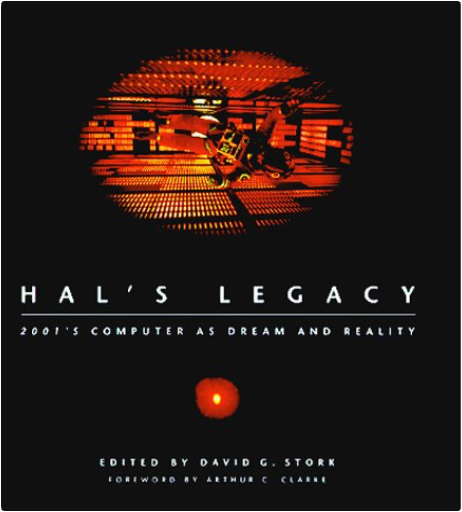 HAL's Legacy: 2001's Computer as Dream and RealityDavid G. Stork HAL's Legacy: 2001's Computer as Dream and RealityDavid G. Stork "I became operational . . . in Urbana, Illinois, on January 12, 1997."
Inspired by HAL's self-proclaimed birth date, HAL's Legacy reflects upon science fiction's most famous computer and explores the relationship between science fantasy and technological fact. The informative, nontechnical chapters written especially for this book describe many of the areas of computer science critical to the design of intelligent machines, discuss whether scientists in the 1960s were accurate about the prospects for advancement in their fields, and look at how HAL has influenced scientific research.
Contributions by leading scientists look at the technologies that would be critical if we were, as Arthur Clarke and Stanley Kubrick imagined thirty years ago, to try and build HAL in 1997: supercomputers, fault-tolerance and reliability, planning, artificial intelligence, lipreading, speech recognition and synthesis, commonsense reasoning, the ability to recognize and display emotion, and human-machine interaction. Not only would these technologies be critical in building HAL, but all are being explored for the design of today's intelligent machines. A separate chapter by philosopher Daniel Dennett considers the ethical implications of intelligent machines.
Profusely illustrated with color images from the film and from current research, HAL's Legacy provides surprising new perspectives on key moments in the film - you will never view 2001 the same way again. 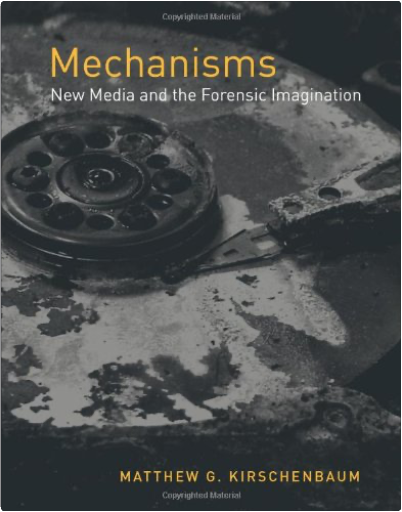 Mechanisms: New Media and the Forensic ImaginationMatthew G. Kirschenbaum Mechanisms: New Media and the Forensic ImaginationMatthew G. Kirschenbaum In Mechanisms, Matthew Kirschenbaum examines new media and electronic writing against the textual and technological primitives that govern writing, inscription, and textual transmission in all media: erasure, variability, repeatability, and survivability. Mechanisms is the first book in its field to devote significant attention to storage—the hard drive in particular—arguing that understanding the affordances of storage devices is essential to understanding new media. Drawing a distinction between "forensic materiality" and "formal materiality," Kirschenbaum uses applied computer forensics techniques in his study of new media works. Just as the humanities discipline of textual studies examines books as physical objects and traces different variants of texts, computer forensics encourage us to perceive new media in terms of specific versions, platforms, systems, and devices. Kirschenbaum demonstrates these techniques in media-specific readings of three landmark works of new media and electronic literature, all from the formative era of personal computing: the interactive fiction game Mystery House, Michael Joyce's Afternoon: A Story, and William Gibson's electronic poem "Agrippa." 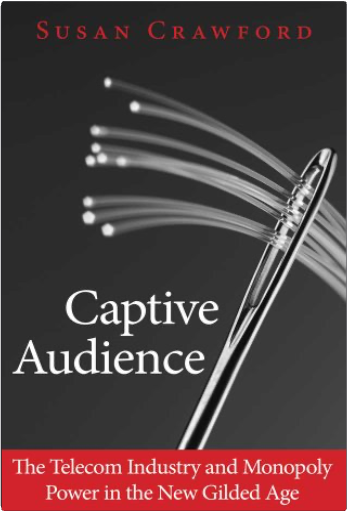 Captive Audience: The Telecom Industry and Monopoly Power in the New Gilded AgeSusan Crawford Captive Audience: The Telecom Industry and Monopoly Power in the New Gilded AgeSusan Crawford Ten years ago, the United States stood at the forefront of the Internet revolution. With some of the fastest speeds and lowest prices in the world for high-speed Internet access, the nation was poised to be the global leader in the new knowledge-based economy. Today that global competitive advantage has all but vanished because of a series of government decisions and resulting monopolies that have allowed dozens of countries, including Japan and South Korea, to pass us in both speed and price of broadband. This steady slide backward not only deprives consumers of vital services needed in a competitive employment and business market—it also threatens the economic future of the nation.
This important book by leading telecommunications policy expert Susan Crawford explores why Americans are now paying much more but getting much less when it comes to high-speed Internet access. Using the 2011 merger between Comcast and NBC Universal as a lens, Crawford examines how we have created the biggest monopoly since the breakup of Standard Oil a century ago. In the clearest terms, this book explores how telecommunications monopolies have affected the daily lives of consumers and America's global economic standing. 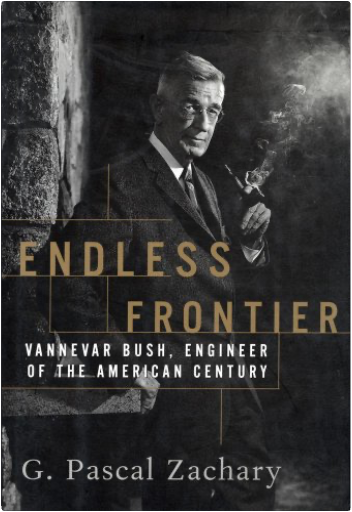 Endless Frontier: Vannevar Bush, Engineer of the American CenturyGregg Pascal Zachary Endless Frontier: Vannevar Bush, Engineer of the American CenturyGregg Pascal Zachary In the 20th - the American - Century, no visionary stands taller than Vannevar Bush. As the inventor and public entrepreneur who launched the Manhattan Project, helped to create the military-industrial complex, conceived of a permanent system of government support for science and engineering and anticipated the personal computer and the Internet, Bush is our century's reincarnation of Ben Franklin. Beginning with his boyhood as a turn-of-the-century tinkerer in his father's basement in Massachusetts, Bush went on to study and teach electrical engineering at Tufts and MIT. An early academic entrepreneur, he cofounded Raytheon, a highly successful electronics company, in his spare time. At MIT, during the Depression, he built what were then the most powerful computers in the world. During World War II, he was Roosevelt's adviser and chief contact on all matters of military technology, including the atomic bomb. He launched the Manhattan Project and oversaw a collection of 6,000 civilian scientists who designed scores of new weapons. When an Allied victory seemed inevitable, his attention turned to the future. In July 1945 he published his legendary essay, "As We May Think, " widely cited as the inspiration for the personal computer and the World Wide Web. In his landmark "Endless Frontier" report, published only weeks later, he boldly equated national security with research strength, outlining a system of permanent federal funding for university research that endures to this day. 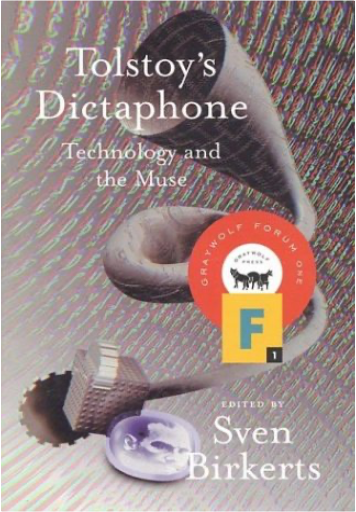 Tolstoy's Dictaphone: Technology and the MuseSven Birkerts Tolstoy's Dictaphone: Technology and the MuseSven Birkerts When the great Russian writer Tolstoy was first offered the use of a brand new invention called the Dictaphone, he refused it, saying that it was sure to be "too dreadfully exciting" and would distract him from his literary endeavors.
For this provocative launch of the Graywolf Forum series, Sven Birkerts invited a number of literary writers to tell him how they were reacting to the technological innovatios of our day. Do the "dreadful excitements" promised by a digital future cause us to forfeit our time-honored cultural traditions for dubious gain? Or will the electronic millennium usher in an unprecedented age of interconnectedness and opportunities for wider communication?
In the tradition of the Graywolf Annuals, this first Graywolf Forum presents a wide range of responses from contemporary creative writers.
Contributors:
Sven Birkerts
Harvey Blume
Daniel Mark Epstein
Jonathan Franzen
Thomas Frick
Alice Fulton
Albert Goldbarth
Carolyn Guyer
Gerald Howard
Wendy Lesser
Ralph Lombreglia
Carole Maso
Askold Melnyczuk
Robert Pinsky
Wulf Rehder
Lynne Sharon Schwartz
Tom Sleigh
Mark Slouka
Paul West 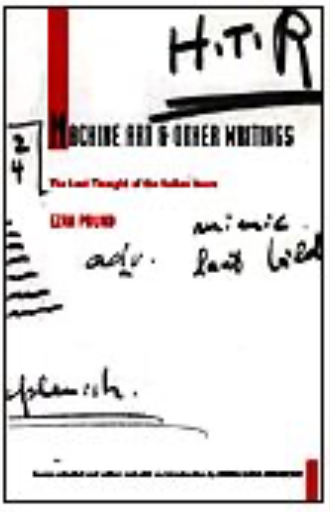 Machine Art and Other Writings: The Lost Thought of the Italian YearsEzra Pound, Maria Luisa Ardizzone Machine Art and Other Writings: The Lost Thought of the Italian YearsEzra Pound, Maria Luisa Ardizzone Machine Art and Other Writings presents previously unpublished and rare writings by one of the literary giants of the modernist period, Ezra Pound. Written from the late 1920s to the early part of the 1940s, these essays, selected by Maria Luisa Ardizzone and including “Machine Art,” “How To Write,” “European Paideuma,” and “Pragmatic Aesthetics,” are typically Poundian in style—irascible, eccentric, and by turns both engaging and cryptic. Importantly, these essays from Pound’s Italian years shed light both on the sections of the Cantos written in the late 1940s and on the underpinnings of his well-known anti-Semitism.
The essays in this volume address Pound’s diverse aesthetic concerns, including his Vorticism and his criticism of Western metaphysics, his advancement of the machine as a new criterion for beauty, his encounter with the German Bauhaus movement, and his search for a type of writing ruled by mathematical rather than grammatical laws. Machine Art and Other Writings documents the wide proportions of Pound’s polemic against the abstractions of modernism and reveals the extent to which he was at odds with the metaphysical assumptions of his time. The volume, edited by Ardizzone, is the result of years of systematic and intensive study of Pound’s manuscripts, including glosses from the texts of his personal library. Proposing an unconventional approach to Pound studies that focuses on marginality and intertextuality, she subverts the canonical hierarchy of Pound’s works by revealing the power of texts considered marginalia.
General readers, students and scholars in the fields of European and American modernism, aesthetics, the history of technology, and art history, as well as Pound specialists and the many poets and writers influenced by Pound, will greet the publication of Machine Art and Other Writings with interest and anticipation. 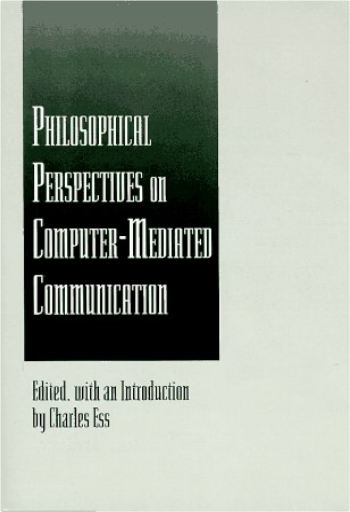 Philos Perspec Computer-Mediated CCharles Ess Philos Perspec Computer-Mediated CCharles Ess The rush to the Information Superhighway and the transition to an Information Age have enormous political, ethical, and religious consequences. The essays collected here develop both interdisciplinary and international perspectives on privacy, critical thinking and literacy, democratization, gender, religion, and the very nature of the revolution promised in cyberspace. These essays are essential reading for anyone who wants to better understand and reflect upon these events and issues. 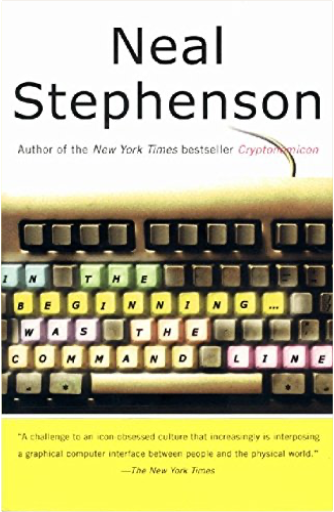 In the Beginning...was the Command LineNeal Stephenson In the Beginning...was the Command LineNeal Stephenson This is "the Word" — one man's word, certainly — about the art (and artifice) of the state of our computer-centric existence. And considering that the "one man" is Neal Stephenson, "the hacker Hemingway" (Newsweek) — acclaimed novelist, pragmatist, seer, nerd-friendly philosopher, and nationally bestselling author of groundbreaking literary works (Snow Crash, Cryptonomicon, etc., etc.) — the word is well worth hearing. Mostly well-reasoned examination and partial rant, Stephenson's In the Beginning... was the Command Line is a thoughtful, irreverent, hilarious treatise on the cyber-culture past and present; on operating system tyrannies and downloaded popular revolutions; on the Internet, Disney World, Big Bangs, not to mention the meaning of life itself.  Remediation: Understanding New MediaJ. David Bolter, Richard Grusin Remediation: Understanding New MediaJ. David Bolter, Richard Grusin Media critics remain captivated by the modernist myth of the new: they assume that digital technologies such as the World Wide Web, virtual reality, and computer graphics must divorce themselves from earlier media for a new set of aesthetic and cultural principles. This text offers a theory of mediation for our digital age that challenges this assumption. They argue that visual media achieve their cultural significance precisely by paying homage to, rivaling, and refashioning such earlier media as perspective painting, photography, film and television. They call this process of refashioning "remediation" and they note that earlier media have also refashioned one another: photography remidiated painting, film remediated stage production and photography, and television remediated film, vaudeville and radio. In chapters devoted to individual media or genres (such as computer games, digital photography, virtual reality, film, and television), the authors illustrate the process of remediation and its two principal styles or strategies: transparent immediacy and hypermediacy. Each of these strategies has a long and complicated history. A painting by the 17th-century artists Pieter Saenredam, a photograph by Edward Weston, and a computer system for virtual reality are all attempts to achieve transparent immediacy by ignoring or denying the presence of the medium. A medieval illuminated manuscript, an early 20th-century photomontage, and today's buttoned and windowed multimedia applications are instances of hypermediacy - a fascination with the medium itself. Although these two strategies appear contradictory, they are in fact the two necessary halves of remediation. 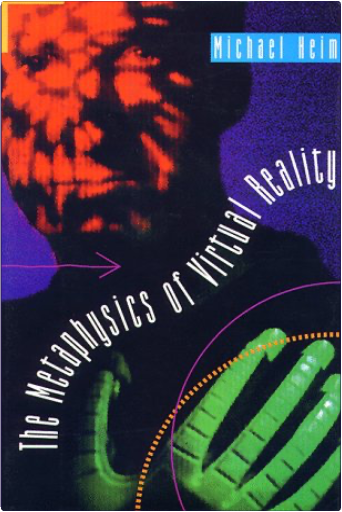 The Metaphysics of Virtual RealityMichael Heim The Metaphysics of Virtual RealityMichael Heim Computers have dramatically altered life in the late twentieth century. Today we can draw on worldwide computer links, speeding up communications by radio, newspapers, and television. Ideas fly back and forth and circle the globe at the speed of electricity. And just around the corner lurks full-blown virtual reality, in which we will be able to immerse ourselves in a computer simulation not only of the actual physical world, but of any imagined world. As we begin to move in and out of a computer-generated world, Michael Heim asks, how will the way we perceive our world change?
In The Metaphysics of Virtual Reality, Heim considers this and other philosophical issues of the Information Age. With an eye for the dark as well as the bright side of computer technology, he explores the logical and historical origins of our computer-generated world and speculates about the future direction of our computerized lives. He discusses such topics as the effect of word-processing on the English language (while word-processors have led to increased productivity, they have also led to physical hazards such as repetitive motion syndrome, which causes inflamed hand and arm tendons). Heim looks into the new kind of literacy promised by Hypertext (technology which allows the user to link audio and video elements, the disadvantages including disorientation and cognitive overload). And he also probes the notion of virtual reality, "cyberspace"—the computer-simulated environments that have captured the popular imagination and may ultimately change the way we define reality itself. Just as the definition of interface itself has evolved from the actual adaptor plug used to connect electronic circuits into human entry into a self-contained cyberspace, so too will the notion of reality change with the current technological drive. Like the introduction of the automobile, the advent of virtual reality will change the whole context in which our knowledge and awareness of life are rooted. And along the way, Heim covers such intriguing topics as how computers have altered our thought habits, how we will be able to distinguish virtual from real reality, and the appearance of virtual reality in popular culture (as in Star Trek's holodeck, William Gibson's Neuromancer, and Stephen King's Lawnmower Man).
Vividly and entertainingly written, The Metaphysics of Virtual Reality opens a window on a fascinating world that promises—or threatens—to become an integral part of everyday life in the 21st century. As Heim writes, not only do we face a breakthrough in the technology of computer interface, but we face the challenge of knowing ourselves and determining how the technology should develop and ultimately affect the society in which it grows.  IBM Redux: Lou Gerstner and the Business Turnaround of the DecadeDoug Garr IBM Redux: Lou Gerstner and the Business Turnaround of the DecadeDoug Garr Can one man change the course of business history?
When Lou Gerstner, a high-tech neophyte, took the helm at IBM in 1993, the company was in a death spiral. Big Blue lost $8 billion that year, capping a three-year loss of nearly $16 billion. One of the nation's premiere industrial giants seemed destined to wither away and die in bankruptcy. The world of high technology changed and IBM failed to adapt, drowning in its own bureaucracy and its insular view of the business world.
Six years later, after a miraculous recovery, IBM is vital and thriving once again. The stock has reached its all-time high, the balance sheet is cashrich, and its market capitalization has increased more than fourfold to $169 billion. It is a success story beyond compare.
IBM Redux is the inside story of the greatest turnaround in business history, and the man who made it happen
Here is the first in-depth look at IBM's recovery and the man who is leading it, Louis V. Gerstner, Jr. It is a skillfully told story, as author Doug Garr chronicles Gerstner's rise, his arrival as the first steward from outside the company's ranks, and his implementation of new business and marketing strategies. Drawn from more than 150 interviews and hundreds of pages of documents, Garr paints an enthralling portrait of the improbable transformation of this dying mainframe company into an increasingly nimble information services giant. With unprecedented access to current and former IBM employees, the author provides rare insight into how it happened and what still needs to happen for the company to thrive in the twenty-first century.
From the complete overhaul of IBM's culture and image to the takeover of Lotus and the development of network technology, Garr vividly illustrates Gerstner's operating methods, management philosophy, and, yes, vision. And along the way he reveals who this extraordinary, sometimes difficult, man is, what drives him, and where, in the eyes of his critics, he has missed the mark.
Fast-paced and fascinating, IBM Redux is the first unauthorized, behind-the-scenes look at a remarkable company and its remarkable manager who, after previous careers dispensing cookies and credit cards, is rapidly changing the face of the entire high-tech industry. |
 Deep Ancestry: Inside the Genographic ProjectSpencer Wells
Deep Ancestry: Inside the Genographic ProjectSpencer Wells  HAL's Legacy: 2001's Computer as Dream and RealityDavid G. Stork
HAL's Legacy: 2001's Computer as Dream and RealityDavid G. Stork  Mechanisms: New Media and the Forensic ImaginationMatthew G. Kirschenbaum
Mechanisms: New Media and the Forensic ImaginationMatthew G. Kirschenbaum  Captive Audience: The Telecom Industry and Monopoly Power in the New Gilded AgeSusan Crawford
Captive Audience: The Telecom Industry and Monopoly Power in the New Gilded AgeSusan Crawford  Endless Frontier: Vannevar Bush, Engineer of the American CenturyGregg Pascal Zachary
Endless Frontier: Vannevar Bush, Engineer of the American CenturyGregg Pascal Zachary  Tolstoy's Dictaphone: Technology and the MuseSven Birkerts
Tolstoy's Dictaphone: Technology and the MuseSven Birkerts  Machine Art and Other Writings: The Lost Thought of the Italian YearsEzra Pound, Maria Luisa Ardizzone
Machine Art and Other Writings: The Lost Thought of the Italian YearsEzra Pound, Maria Luisa Ardizzone  Philos Perspec Computer-Mediated CCharles Ess
Philos Perspec Computer-Mediated CCharles Ess  In the Beginning...was the Command LineNeal Stephenson
In the Beginning...was the Command LineNeal Stephenson  Remediation: Understanding New MediaJ. David Bolter, Richard Grusin
Remediation: Understanding New MediaJ. David Bolter, Richard Grusin  The Metaphysics of Virtual RealityMichael Heim
The Metaphysics of Virtual RealityMichael Heim  IBM Redux: Lou Gerstner and the Business Turnaround of the DecadeDoug Garr
IBM Redux: Lou Gerstner and the Business Turnaround of the DecadeDoug Garr  Made with Delicious Library
Made with Delicious Library